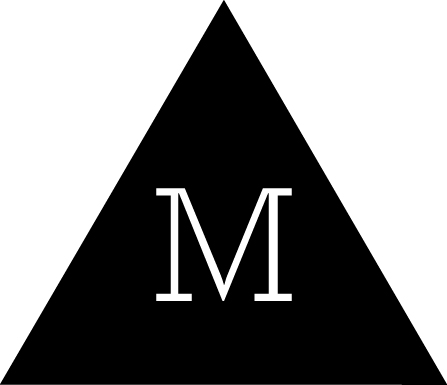The Object that Exists, Exists and Exists Again
Mario Gallucci
Text/Brittney Connelly
Editor/Grace Foster
Mario Gallucci wants you to consider it again.
As a viewer of his solo exhibition, Counterfeit Universe, you will be expected to give the work a second look. A garage door, an American flag, and tomato planter expertly crafted out of photographs, materialize as three-dimensional objects that could fool even the most scrupulous of viewers. A solo paint roller and tray exist unassumingly in a corner of the gallery, often passed by, unrecognised as an element that plays part in the show. The objects, seemingly random, share a transformation of materiality that has rendered all objects useless in terms of functionality. While Gallucci's work seems to deliver a nod to the ready-made and romanticize the banal, the materiality of the pieces seem to approach Gallucci's larger objective: to ask viewers to consider what it means to encounter an object that has been dismantled through the interpolation of photographs.
While it pains me to reveal the illusion so quickly: sorry, that is not an actual garage door, it’s a photograph. I see it as a secondary experience to the unhinging that brews beneath the surface of these objects. Gallucci’s process partners the image with that of the actual, constructing three-dimensional photographic objects that exist as eerie doubles. The two-dimensional image taunts us with the possibility of becoming more; in his constructions Gallucci delivers the next step. The experience of wonder that occurs when an image transcends into a three-dimensional iteration, brings us back to a time when the television romanticized a hamburger that would materialize from the screen. Gallucci taps into an insatiable hunger for the image to complete the circle, to reconstitute as a version of the actual that serves to curate a new existence. We want for that hamburger to pop out of a screen so we can touch it and to make new associations with it. His three-dimensional constructions do good work of fooling the viewer into conjuring memories and thoughts surrounding the objects themselves. When the same associations can be grappled with through the photographic representation of the real, what need do we have for the actual? Gallucci's work activates our complex history with the image, as it entangles itself as part document, part representation of the thing itself, and in part a construction.
While the materiality of the work drags along the complicated terms in which we negotiate our relationship to images, Gallucci’s subject of the banal gives us a familiar place to rest. He is determined to make connections between the real world experiences we encounter and our expectations of work that fills gallery walls. Gallucci is keenly aware of the power objects have within the context of the gallery. Walking through the show, one gets a sense that the artist is trying to shift that power to the everyday experience. He presents an experience that we can take with us when we leave the show. We can experience it again on our next encounter outside with a garage door, or find it when we stumble upon a rock.
As a viewer you can pull these objects out one by one, relish in their construction, examine the power of the materiality and understand their commonality of being common, but is there something that unites these objects further? Gallucci may be wrestling with that qualm; his work moves us to an unstable place of associations that develop from material likeness, occasionally leaving us to want more play between the objects themselves. How does the flag exist in context with the row of knives or the shelf of rocks? His objects speak volumes when they transcend their own inherent associations, and activate the surrounding space. Gallucci delivers this exceedingly well in the piece “Paint Roller and Pan (2014)”. Within the piece a paint roller and pan sit quietly next to the constructed garage door with graffiti paint scrawled across it. Gallucci determines the object placement with a precision that leads us to a slow dismantling of the space beyond it. The roller, placed as if it were the actual object, activates both the simulated garage and the adjacent gallery walls. The composition conjures notions of artist as laborer, the gallery as a construction itself and points to time dismantled by the static image of the garage.
Although these subtleties in placement become less prominent as the viewer moves into the space, it can be seen again where simple rocks rest upon a constructed white shelf that fades into the gallery walls and in that moment the walls serve as an extension of the work. Within the set of pieces, the gallery moves into the narrative of the work and the subject of artist as curator colors its existence. Other pieces are more isolated and the subtlety of the object rests in the transformation of the material. The most note-worthy example of this is “Tomato Planter”, its shape delicately rendered out of paper, mimicking the original so well that you can almost believe in its steel properties. By removing the frame, Gallucci's work creates a demand for a larger one, a frame that implicates the viewer within it. As the illusion of the work is uncovered everything becomes part of the construction. Beautifully rendered, Gallucci's work intends for us to see things differently, spend time with objects we may see as usual and unremarkable, and consider them again.
Counterfeit Universe was shown for the month of April 2015 at One Grand Gallery.


